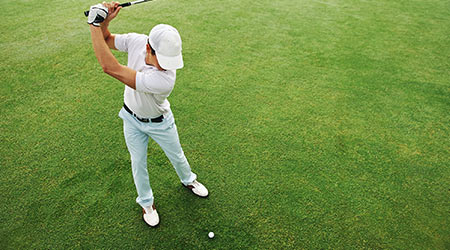
Got Your Eye on a Healthcare Property? Make Sure to Consider Maintenance Costs
June 19, 2017
Attractive purchase prices can tempt buyers to bypass due diligence. However, if you’re looking to acquire a medical facility, it’s critical to evaluate the property’s physical condition prior to inking the deal. Building maintenance represents a significant cost of property ownership, and overlooking it can be an expensive mistake, particularly for an asset that seems like a bargain. Owners and operators should also review inventory and asset data to understand the current state of systems; to develop capital programs and facilities best practices; and to prevent possible re-trade on the sale of an asset.
To determine ongoing maintenance costs, it’s best to work with a reputable condition assessment consultancy to complete a Facility Condition Assessment (FCA). Prepared by an engineer or architect, an FCA reports major components that may require repair or replacement over a definitive timeframe. The assessment lists what items were evaluated, the unit cost to repair or replace the items, their expected useful life (EUL), and their remaining useful life (RUL). In addition to an FCA, specialty reports should be considered to review environmental risk, facility compliance, operations and critical systems. It’s important to work with a team capable of providing a comprehensive evaluation of the building and its component systems. Before you invest in healthcare assets, evaluate significant items that warrant your consideration. The following are particularly noteworthy:
Pavement. EUL: 20 years. Unit cost: $12–$25/SY. Asphalt pavement is subject to ongoing damage and typically needs a 1.5-inch overlay after about 20 years. Harsh winters, de-icing salts, constant exposure to sunlight and even heavy trucking can shorten the EUL, so make sure your provider takes these into consideration. Market adjustments for material costs will always be present, and scopes of work for facility maintenance can vary based on conditions.
Resealing facades. EUL: 12 years. Unit cost: $3.50–$5/LF. Sealants and caulk used on a building’s exterior façade to maintain a watertight envelope will start to break down several years after application. They’ll need to be scraped out and replaced after about 12 years or sooner if they’re exposed to constant sunlight. Curtainwall systems with gaskets or wet seal systems may approach a 20-year EUL, but a comprehensive maintenance program must be in place.
Façade system-specific repairs. EUL: 7–35 years. Unit cost: $1–$50/SF. Repairs vary widely by building exterior materials, design, type and size. Brick buildings typically require re-pointing after about 35 years at a cost of $25 per square foot, but if entire sections of masonry must be restored or replaced, costs can quickly approach $50/SF. By contrast, curtainwall gaskets and seals need to be replaced every 15–25 years at a cost of $5–$10/SF, and concrete and wood exteriors need repainting approximately every seven years at a cost of $1/SF. Finally, recoating the acrylic finish on an EIFS (Exterior Insulation and Finish System) façade needs to be done every 20–25 years at a cost of about $4/SF.
Roofing. EUL: 20–35 years. Unit cost: $6–$25/SF. Regardless of type, expect to replace your roof 15–30 years from the date of installation. Asphalt shingle roofs tend to have the shortest life span at 20 years, with the exception of dark-colored shingle roofs in southern environments, which require replacing after about 15 years. Newer multi-layer architectural shingles can approach a 30-year life span. Lasting a bit longer, single-ply membrane roofs and elastomeric coatings have an EUL of 20–25 years. Metal standing seam roofs and inverted roof membrane assemblies (IRMA) tend to last longer still—35 years or more. As with other items, a roof that is exposed to ultraviolet rays and harsh climates has a considerably shorter EUL. When it comes to replacement costs, asphalt shingles are generally the least expensive; a mid-level commercial grade shingle will set you back about $6/SF. Single-ply membranes cost a bit more at $8–$10/SF; expect additional work such as adding rigid insulation or roof drains to increase the cost. Metal standing seams roofs can cost $12/SF and up, and IRMA roofs are the most expensive at $25/SF. If there are multiple roof layers in place, expect increased total costs due to removal and possible asbestos abatement. Roofs that contain wet insulation will also require more work than simply recovering the system.
Flooring. EUL: 7–15 years. Unit cost: $2–$5/SF. Like roofing, the useful life of a floor varies by material. Terrazzo, porcelain and ceramic tile floors tend to last a long time if installed properly and generally do not require replacement during the reserve term. By contrast, carpet and vinyl tile floors require replacement every 7–15 years, with carpeting at the lower end of the range. Vinyl tile is relatively inexpensive to replace at $2/SF, while carpet prices can vary from $2–$5/SF depending on quality.
Water heater. EUL: 15–20 years. Cost: $1,800–$2,500 each. In most office spaces, there is generally one (or more) central water heater that produces hot water for the common restrooms. (For individual office tenant spaces, the tenant is typically responsible for the maintenance of his own restroom and associated individual water heater units.) The cost of a commercial grade central water heater starts around $1,800. These are free-standing tank-type heaters and not larger boiler systems that would be considered part of a central plant.
MEP systems. EUL: 20–30 years. Unit cost: $1.50–$3.50/SF. Mechanical, electrical and plumbing systems vary widely from building to building. For medical office buildings, the most fundamental type of HVAC consists of a boiler, chiller and cooling tower. You also commonly see packaged rooftop units serving individual tenant spaces for smaller properties. Gas fired boilers last about 30 years; after that you’ll spend $30,000–$300,000 to replace them. Chiller units need to be replaced every 20–25 years and will set you back $500–$1,200 per ton. If you have a packaged rooftop unit, expect it to last about 20 years and cost $10,000–$100,000 depending on size and type of unit. The level of preventive maintenance exercised at the property—inclusive of chemical treatment of process water, diagnostic testing of equipment and findings from ultrasonic testing of piping—are all indicators of potential exposure. System-wide problems can cost more than component replacement since piping risers would need to be replaced. There are other considerations, but due to the complexity of central systems, one way to estimate replacement expenses is by the cost of the entire system per building square foot. Properties that are interconnected to campus utility systems may have other nuances.
Elevator cab finishes. EUL: 15 years. Unit cost: $10,000–$50,000 per elevator. Most medical office buildings over two stories high have elevators, in part because many building codes require public spaces to be fully accessible. With normal use, cab finishes wear out after about 15 years. Costs to replace them vary widely based on the level of finish—high-end cabs can cost more than $50,000. Depending on the arrangement, cab replacement can be a common area maintenance (CAM) expense and therefore would not be listed in the reserve schedule.
Elevator motor/controller. EUL: 20–30 years. Cost: $25,000–$350,000 per elevator. Elevator motors and controllers wear out over time, and the cost to replace them varies. The type of elevator is important; hydraulic elevators serving low- and mid-rise office spaces need their motor replaced after 20–25 years at a minimum of $25,000 to $100,000 per elevator. On the other hand, traction elevators serving high-rise buildings need new controllers every 25–30 years. Costs can reach $350,000 for a full elevator equipment modernization.
While these are the major components you’ll need to consider when owning and operating a medical office building and healthcare property, keep in mind that costs and schedules vary from building to building. Specialty systems found in healthcare properties for surgical suites, research, laboratory space and patient care will require further scrutiny to ensure proper operation and planned capital spending. No matter what items your building has, it’s crucial to get them evaluated. After all, what seems like a good deal on paper could look less like a bargain when you discover you’re going to be hit with unexpected capital costs.
Robert Occhiogrossi, R.A. is a Managing Director with CBRE’s Assessment and Consulting Services group, based in White Plains, NY.
Read the article.
This Quick Read was submitted by Cathryn Jakicic, Healthcare Industries Editor, FacilitiesNet. For about hospital campuses and other medical facilities, visit https://www.facilitiesnet.com/healthcarefacilities/
Next
Read next on FacilitiesNet












